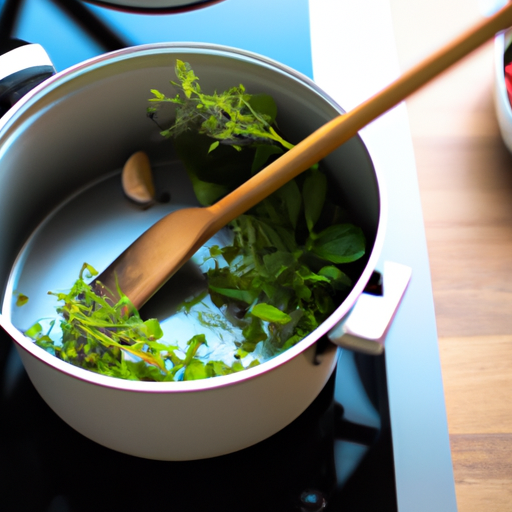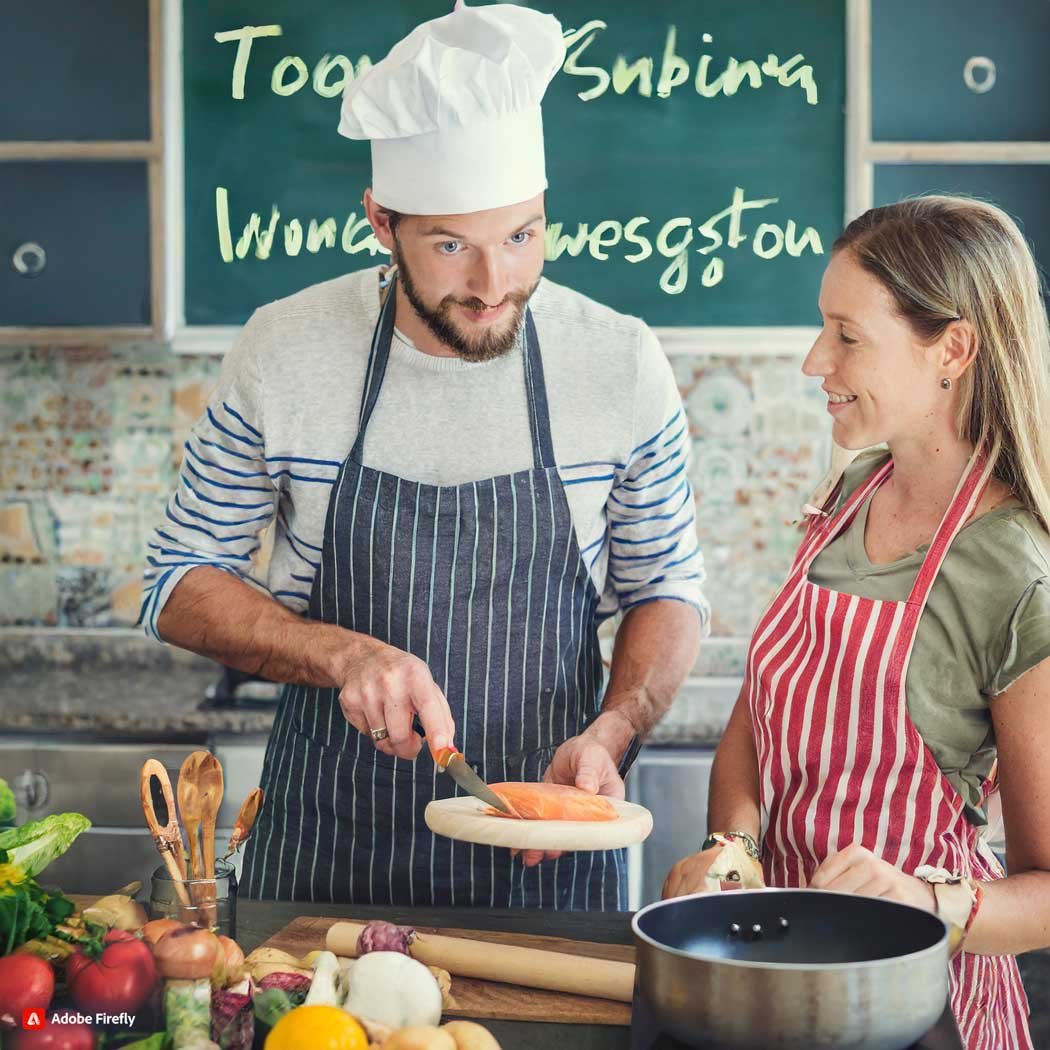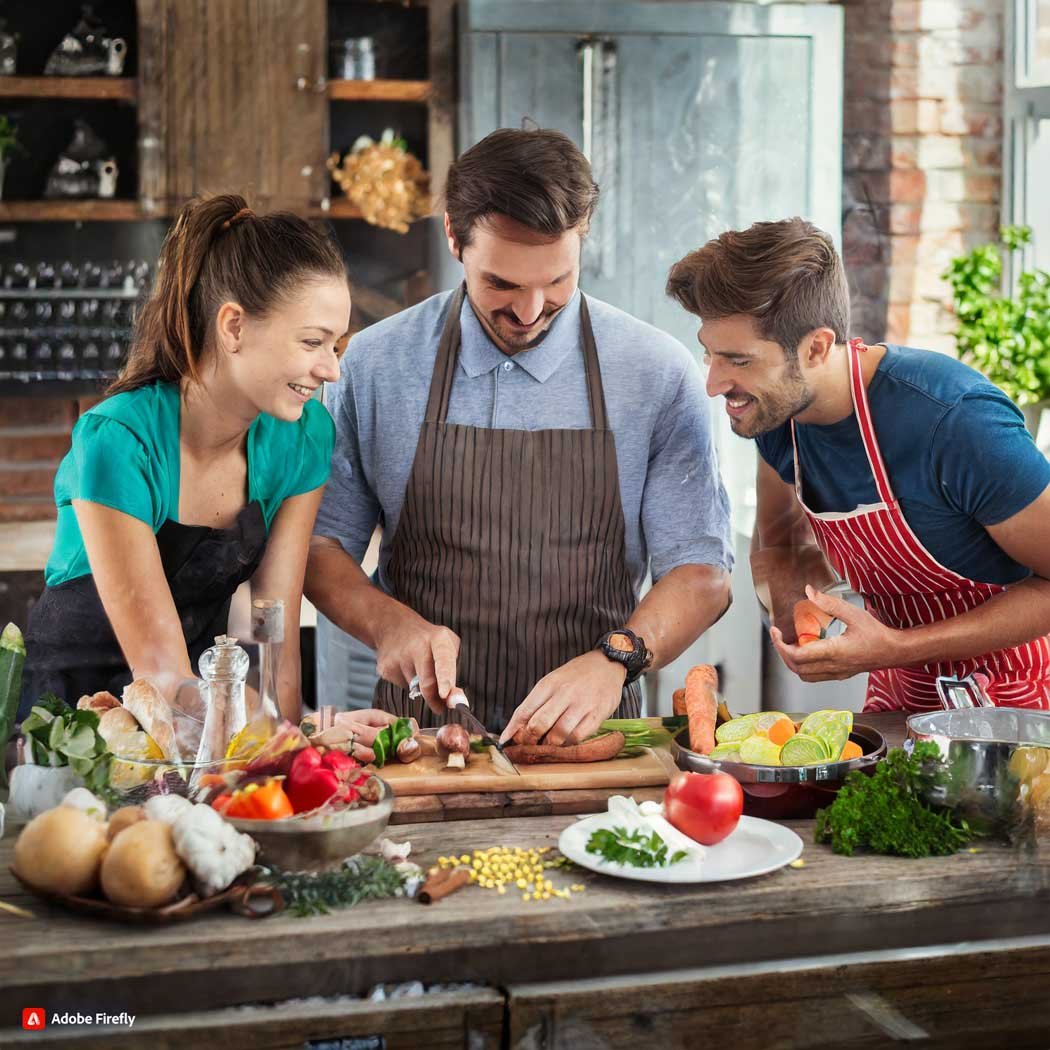Essential Cooking Terms Every Beginner Should Know
Cooking terms can be a daunting task for beginners, especially when it comes to understanding the various terms used in recipes. From sautéing to blanching, there are many cooking terms that may seem unfamiliar and confusing. However, having a basic understanding of these terms is essential for any beginner cook. In this article, we will break down some of the most common cooking terms and explain what they mean.

Firstly, let’s start with the term “mise en place.” This French term translates to “putting in place” and refers to the preparation and organization of ingredients before cooking. This includes measuring out ingredients, chopping vegetables, and having all necessary tools and equipment ready. Mise en place is crucial in cooking as it ensures that everything is ready and within reach, making the cooking process more efficient.
Another important term to know is “chop.” This term is used to describe cutting food into small, uniform pieces. There are different types of chops, such as fine chop, medium chop, and rough chop, depending on the size and shape of the pieces. Chopping is a basic skill that every cook should master, as it is used in many recipes.
Next, we have “sautéing,” which is a cooking technique that involves cooking food quickly in a small amount of fat over high heat. This method is commonly used for vegetables, meats, and seafood. It is important to use a pan with high sides and to constantly stir the food to prevent burning. Sautéing is a great way to add flavor and texture to dishes. Read
Another cooking technique that is often used is “braising.” This involves cooking food slowly in a small amount of liquid, usually in a covered pot. Braising is commonly used for tougher cuts of meat, as the slow cooking process helps to tenderize the meat. It is important to use a flavorful liquid, such as broth or wine, to enhance the flavor of the dish.
“Blanching” is a term that refers to briefly cooking food in boiling water and then immediately transferring it to an ice bath to stop the cooking process. This technique is commonly used for vegetables, as it helps to preserve their color, texture, and nutrients. Blanching is also used to remove the skin from fruits and vegetables, such as tomatoes and peaches.
Moving on to baking terms, “cream” is a term that is often used in baking recipes. This refers to the process of beating butter and sugar together until light and fluffy. Creaming is an important step in many baking recipes, as it helps to incorporate air into the mixture, resulting in a lighter and fluffier texture.
Another important term to know is “fold.” This refers to the gentle mixing of ingredients, usually using a spatula, to incorporate them without deflating the mixture. Folding is commonly used when adding delicate ingredients, such as whipped cream or beaten egg whites, to a batter or mixture. Read
Lastly, we have “proofing,” which is a term used in bread-making. This refers to the process of allowing the dough to rise before baking. Proofing is essential in bread-making as it allows the yeast to ferment and create air pockets, resulting in a light and airy texture.
In conclusion, understanding common cooking terms is essential for any beginner cook. It not only helps to follow recipes accurately but also improves the overall cooking experience. By familiarizing yourself with these terms, you will be able to confidently navigate through recipes and create delicious dishes in no time. So, the next time you come across a new cooking term, don’t be intimidated, embrace it and expand your culinary knowledge. Happy cooking!
Decoding Confusing Cooking Measurements and Conversions

Cooking can be a fun and rewarding experience, but it can also be overwhelming for beginners. One of the most confusing aspects of cooking is understanding the various measurements and conversions used in recipes. From teaspoons to ounces, and from Fahrenheit to Celsius, it can be challenging to keep track of all the different units of measurement. In this article, we will decode some of the most common cooking terms and provide tips on how to convert them accurately.
Let’s start with the most basic unit of measurement in cooking – the teaspoon. A teaspoon is a small spoon used for stirring and serving, and it is equivalent to 5 milliliters (ml). In recipes, you may come across the abbreviation “tsp,” which stands for teaspoon. Similarly, a tablespoon (tbsp) is a larger spoon used for measuring ingredients and is equivalent to 15 ml. It is essential to note that these measurements may vary depending on the country you are in, so it is always best to double-check the conversions.

Moving on to liquid measurements, a cup is a standard unit of measurement in cooking. One cup is equivalent to 8 fluid ounces (fl oz) or 240 ml. However, it is crucial to understand that a cup of liquid and a cup of dry ingredients are not the same. A cup of dry ingredients, such as flour or sugar, is measured by scooping the ingredient into the cup and leveling it off with a knife. On the other hand, a cup of liquid should be measured at eye level, and the measuring cup should be placed on a flat surface for accuracy.
When it comes to measuring larger quantities of liquid, you may come across the term “pint.” A pint is equivalent to 2 cups or 16 fl oz. Similarly, a quart is equal to 4 cups or 32 fl oz. These measurements are commonly used in baking and can be easily converted using simple multiplication.
Now, let’s tackle the confusing world of temperature conversions. In most countries, including the United States, Fahrenheit (°F) is the standard unit of measurement for temperature. However, in many other countries, Celsius (°C) is used. To convert from Fahrenheit to Celsius, you can use the following formula: (°F – 32) x 5/9 = °C. For example, if a recipe calls for a temperature of 350°F, the equivalent in Celsius would be (350-32) x 5/9 = 176.67°C.
Another common temperature conversion is from Fahrenheit to gas mark. Gas mark is a British measurement used in cooking and baking. To convert from Fahrenheit to gas mark, you can use the following formula: (°F – 32) x 5/9 + 3 = gas mark. For example, if a recipe calls for a temperature of 375°F, the equivalent in gas mark would be (375-32) x 5/9 + 3 = gas mark 5.
When it comes to converting between different units of measurement, it is essential to understand the concept of density. For example, one cup of flour may not weigh the same as one cup of sugar. This is because flour is less dense than sugar. Therefore, it is crucial to use a kitchen scale for accurate measurements, especially when it comes to baking.
In conclusion, understanding common cooking terms and conversions is essential for successful and accurate cooking. By familiarizing yourself with the basic units of measurement and using conversion formulas, you can easily navigate through any recipe. Remember to always double-check your conversions and use a kitchen scale for precise measurements. With these tips in mind, you can confidently tackle any recipe and create delicious meals in your kitchen. Read Dinner recipes for Weight Loss.
Mastering Common Cooking Techniques: From Sautéing to Braising
Cooking is an art that requires both skill and knowledge. While having a good sense of taste and creativity in the kitchen is important, understanding common cooking terms is equally crucial. These terms are used to describe various cooking techniques and methods that are essential in creating delicious and well-prepared dishes. In this article, we will delve into some of the most commonly used cooking terms and their meanings, helping you to master the techniques needed to become a skilled cook.

One of the most basic cooking techniques is sautéing. This term refers to cooking food quickly in a small amount of oil or fat over high heat. The key to successful sautéing is to use a pan that is large enough to hold the food in a single layer, allowing it to cook evenly. It is important to constantly move the food around in the pan to prevent it from burning and to ensure that it cooks evenly. Sautéing is commonly used for vegetables, meats, and seafood, and is a great way to add flavor and texture to a dish.
Another commonly used cooking term is braising. This method involves cooking food slowly in a small amount of liquid, usually in a covered pot or pan. The liquid can be water, broth, wine, or a combination of these. Braising is ideal for tougher cuts of meat, as the slow cooking process helps to break down the fibers and make the meat tender. It is also a great way to infuse flavor into the food, as the liquid and the ingredients cook together for an extended period of time.
One term that often confuses home cooks is blanching. This technique involves briefly cooking food in boiling water and then immediately transferring it to an ice bath to stop the cooking process. Blanching is commonly used for vegetables, as it helps to preserve their color, texture, and nutrients. It is also used for peeling fruits and vegetables, as the quick cooking process makes it easier to remove the skin.
Another important cooking term is deglazing. This refers to the process of adding liquid, such as wine or broth, to a pan that has been used to cook meat or vegetables. The liquid helps to loosen the browned bits of food that are stuck to the bottom of the pan, which are full of flavor. This technique is often used to make sauces and gravies, as it adds depth and richness to the dish.
One of the most versatile cooking techniques is grilling. This method involves cooking food over an open flame or hot coals. Grilling is not only limited to meats, but can also be used for vegetables, fruits, and even bread. It is a great way to add a smoky flavor to food and is a popular cooking method during the summer months.

Another term that is commonly used in cooking is marinating. This refers to the process of soaking food in a mixture of oil, acid (such as vinegar or citrus juice), and spices to add flavor and tenderize the food. Marinating is commonly used for meats, but can also be used for vegetables and seafood. The longer the food is marinated, the more flavor it will absorb.
Lastly, let’s talk about poaching. This technique involves cooking food in a liquid, usually water or broth, at a low temperature. Poaching is commonly used for delicate foods such as eggs, fish, and fruits. It is a gentle cooking method that helps to retain the natural flavors and textures of the food.
In conclusion, understanding common cooking terms is essential for anyone looking to become a skilled cook. These terms describe various cooking techniques and methods that are used to create delicious and well-prepared dishes. By mastering these techniques, you will not only be able to follow recipes with ease, but also have the confidence to experiment and create your own unique dishes. So next time you’re in the kitchen, remember these common cooking terms and watch your cooking skills soar.
Q&A for Cooking terms
Q: What does “saute” mean in cooking?
A: Saute means to cook food quickly in a small amount of hot oil or fat over high heat, while stirring or tossing the food continuously.
Q: What is the difference between “chop” and “dice” in cooking?
A: Chopping involves cutting food into irregular, rough pieces, while dicing involves cutting food into small, uniform cubes.
Q: What does “simmer” mean when cooking?
A: Simmering is a cooking technique where food is cooked in liquid at a temperature just below boiling, usually around 185-200°F. It is often used for slow cooking and to develop flavors in soups, stews, and sauces.
Conclusion – Cooking terms
In conclusion, understanding common cooking terms is essential for anyone looking to improve their cooking skills. These terms provide a common language for cooks to communicate and follow recipes accurately. By familiarizing oneself with these terms, one can confidently navigate through any recipe and create delicious dishes with ease. Additionally, understanding cooking terms can also help in experimenting with new recipes and techniques, leading to a more diverse and enjoyable cooking experience. Whether you are a beginner or an experienced cook, having a good understanding of common cooking terms is crucial for success in the kitchen.
Please follow us on linkedin. You can learn all best canadian food recipes you can check our Culinary 1TouchFood Youtube and Telegram 1TouchFood page. Don’t forget Fighting Obesity Magazine and Radio Cooking.

